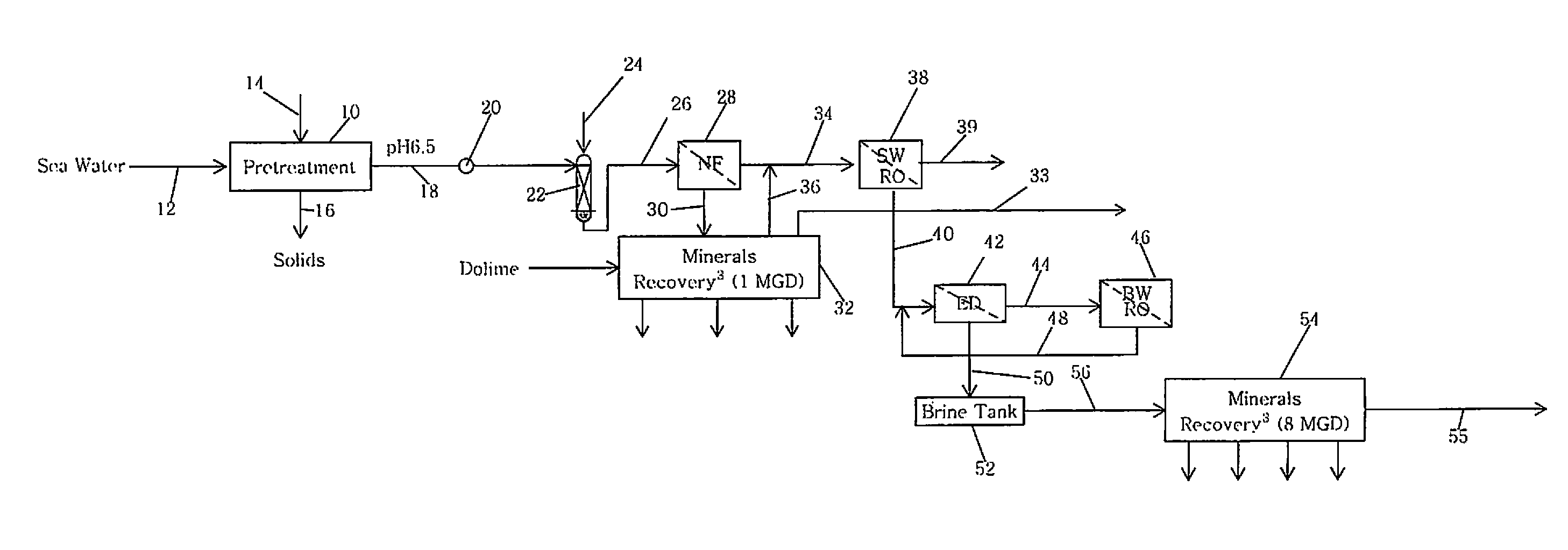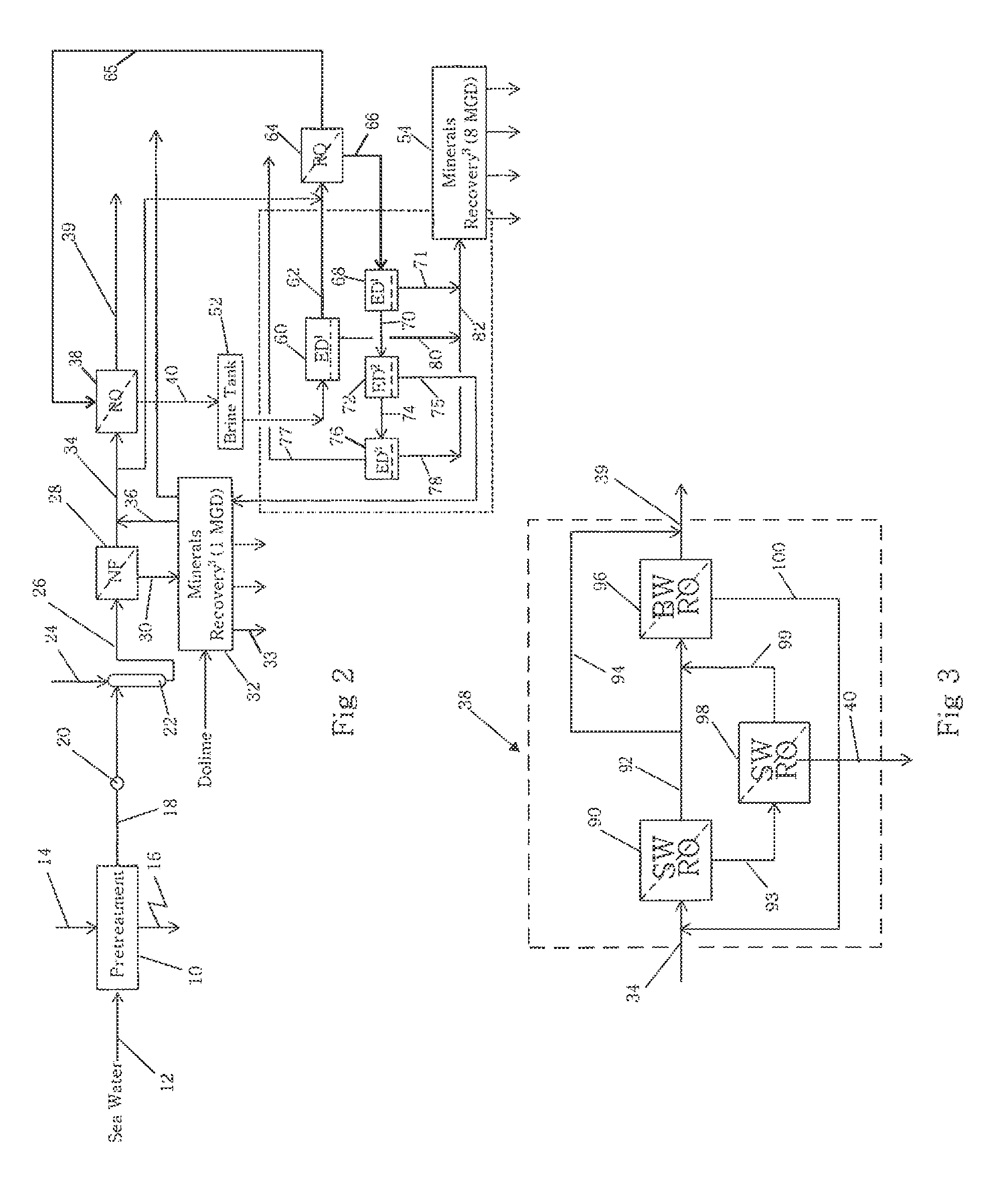Membrane and electrodialysis based seawater desalination with salt, boron and gypsum recovery
a technology of membrane and electrodialysis, which is applied in the direction of membranes, filtration separation, separation processes, etc., can solve the problems of gypsum scaling, boron recovery or removal, and membrane scaling, and achieve the effect of low cos
- Summary
- Abstract
- Description
- Claims
- Application Information
AI Technical Summary
Benefits of technology
Problems solved by technology
Method used
Image
Examples
Embodiment Construction
[0059]The following abbreviations and acronyms are used throughout the application:
[0060]BWRO: brackish water reverse osmosis
[0061]ED: electrodialysis
[0062]ED(R): electrodialysis reversal
[0063]g / l: grams per liter
[0064]MGD: million gallons per day
[0065]MVR: mechanical vapor recompression
[0066]NF: nano filtration
[0067]RO: reverse osmosis
[0068]SWRO: seawater reverse osmosis
[0069]sTPD: short tons per day
[0070]TDS: total dissolved solids
Standalone Systems
[0071]Referring to FIG. 1 of the drawings, seawater or brackish water at input 12 is routed to a solids removal pretreatment section 10 which uses a combination of settling, filtration, and ultra-filtration to produce a feedwater stream essentially free of suspended solids. The pH of the feed water is adjusted to pH 6-6.5 as part of the pretreatment process using hydrochloric acid, sulfuric acid or caustic as necessary, as indicated at 14. The pH adjustment minimizes soluble silica in the feedwater to prevent downstream membrane fouling...
PUM
| Property | Measurement | Unit |
|---|---|---|
| temperature | aaaaa | aaaaa |
| wt % | aaaaa | aaaaa |
| pH | aaaaa | aaaaa |
Abstract
Description
Claims
Application Information
 Login to View More
Login to View More - R&D
- Intellectual Property
- Life Sciences
- Materials
- Tech Scout
- Unparalleled Data Quality
- Higher Quality Content
- 60% Fewer Hallucinations
Browse by: Latest US Patents, China's latest patents, Technical Efficacy Thesaurus, Application Domain, Technology Topic, Popular Technical Reports.
© 2025 PatSnap. All rights reserved.Legal|Privacy policy|Modern Slavery Act Transparency Statement|Sitemap|About US| Contact US: help@patsnap.com



